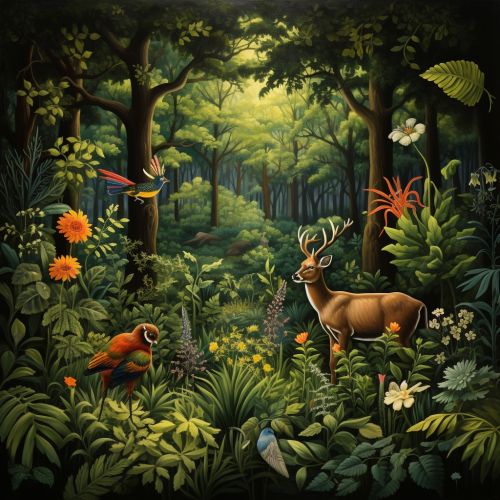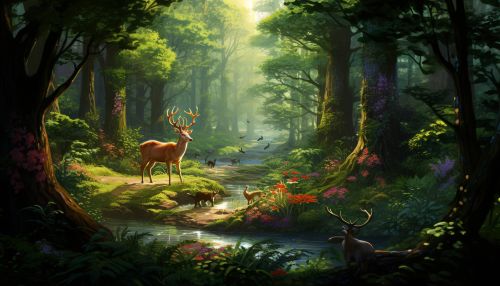Wildlife
Introduction
Wildlife refers to all non-domesticated plants, animals, and other organisms. It encompasses all living organisms that are not directly managed by humans, including animals, fungi, and plants. Wildlife can be found in all ecosystems, such as deserts, forests, rainforests, plains, grasslands, and other areas, including urban areas.


Classification of Wildlife
Wildlife is classified into various categories based on their characteristics, habitat, and behavior. The primary classification is into flora (plants) and fauna (animals). Further classification includes mammals, birds, reptiles, amphibians, and insects among others. Each of these categories is unique and diverse, with species adapted to live in a wide range of environments.
Flora
Flora refers to the plant life found in a particular region or time, generally the naturally occurring or indigenous plant life. The corresponding term for animal life is fauna. Flora, fauna, and other forms of life such as fungi are collectively referred to as biota.
Fauna
Fauna is all of the animal life of any particular region or time. The corresponding term for plants is flora. Zoologists and paleontologists use fauna to refer to a typical collection of animals found in a specific time or place, e.g. the "Sonoran Desert fauna" or the "Burgess Shale fauna".
Importance of Wildlife
Wildlife plays a crucial role in balancing the environment and provides stability to different natural processes of nature. It can be found in all ecosystems, desert, rainforests, plains, and other areas. Wildlife plays an essential role in the functioning of the earth’s ecosystems, which we depend on for a wide range of services, from clean water and air to food and materials, as well as psychological well-being.
Threats to Wildlife
Wildlife faces various threats including habitat destruction, climate change, hunting, and introduction of non-native species. These threats often result in the reduction of biodiversity and extinction of species.
Habitat Destruction
Habitat destruction is the process by which natural habitat is rendered unable to support the species present. In this process, the organisms that previously used the site are displaced or destroyed, reducing biodiversity. Habitat destruction by human activity is mainly for the purpose of harvesting natural resources for industrial production and urbanization.
Climate Change
Climate change caused by global warming is a major threat to wildlife and their habitats. Changes in temperature and precipitation patterns and increases in the frequency and intensity of extreme weather events can alter the timing of life cycle events, such as migration and reproduction, which can affect survival rates.
Hunting
Hunting, both legal and illegal, can significantly impact wildlife populations. Overhunting can result in the extinction of particular species. This is known as overkill. In addition to this, hunting and fishing can also lead to food chain disruption, biodiversity loss, and ecological imbalance.
Introduction of Non-native Species
The introduction of non-native species can cause substantial shifts in ecosystem composition and a decrease in biodiversity. Often, these species become invasive, as they have no natural predators in the new environment.
Conservation of Wildlife
Wildlife conservation is the practice of protecting wild species and their habitats in order to maintain healthy wildlife species or populations and to restore, protect or enhance natural ecosystems. Major threats to wildlife include habitat destruction/degradation/fragmentation, overexploitation, poaching, pollution and climate change.
